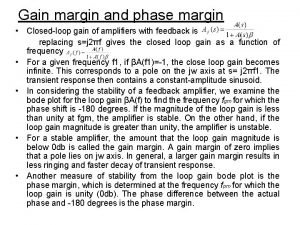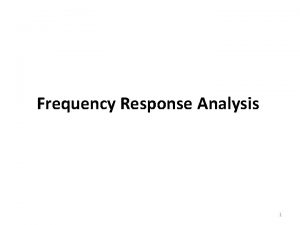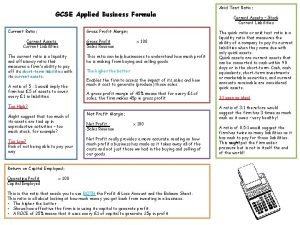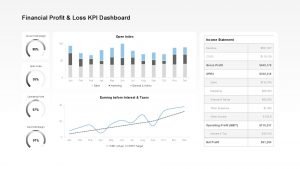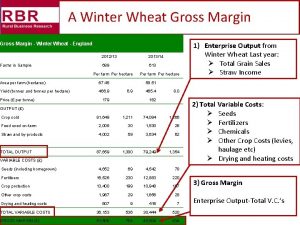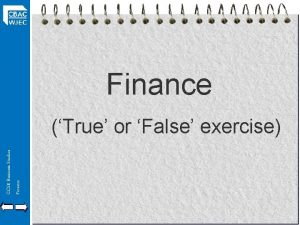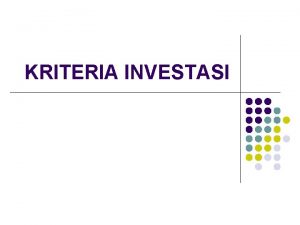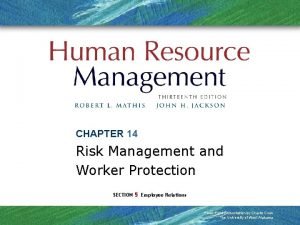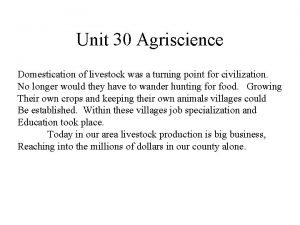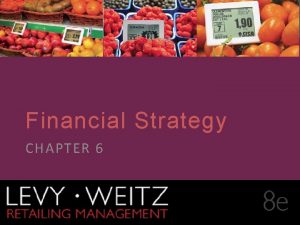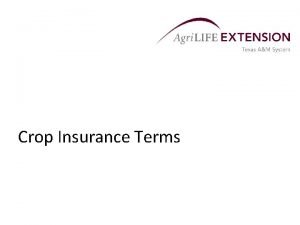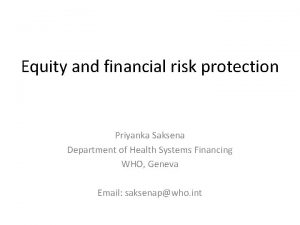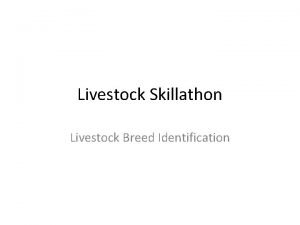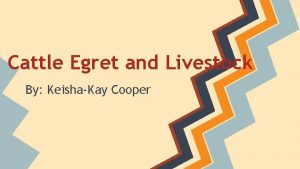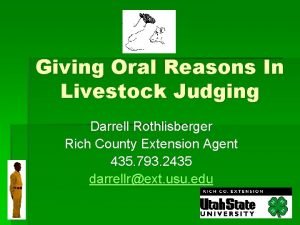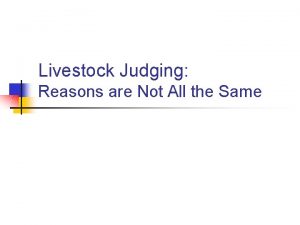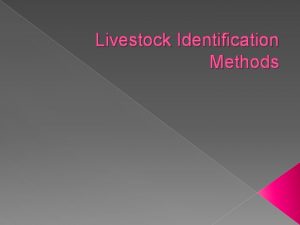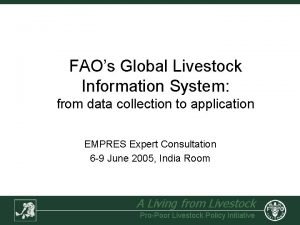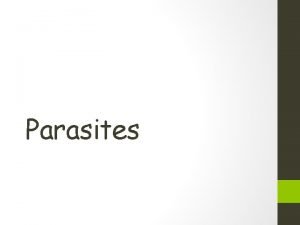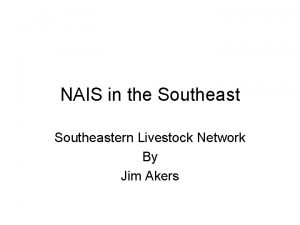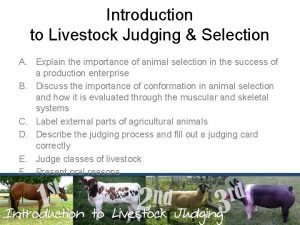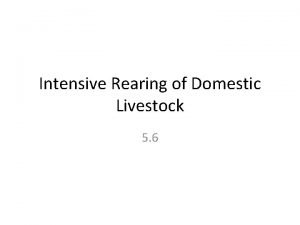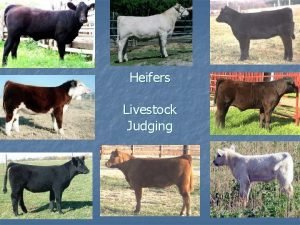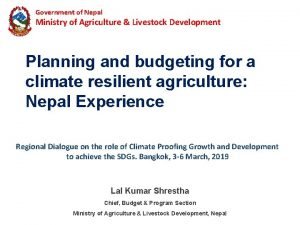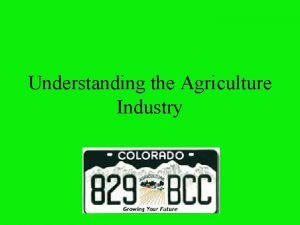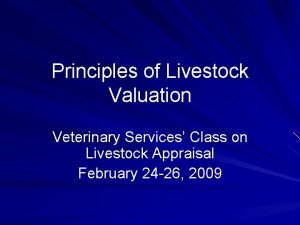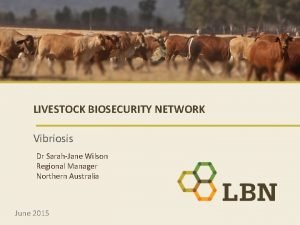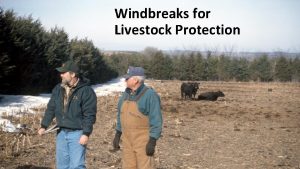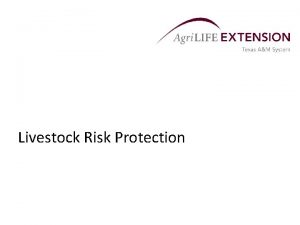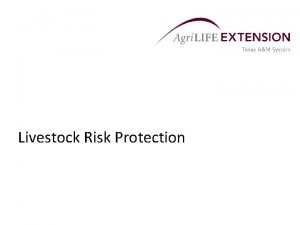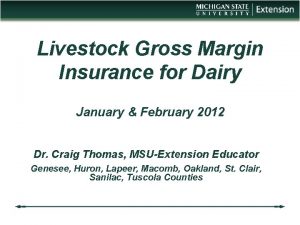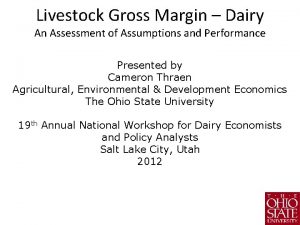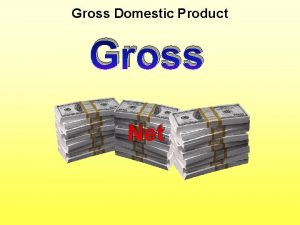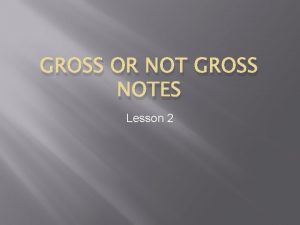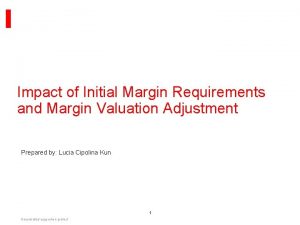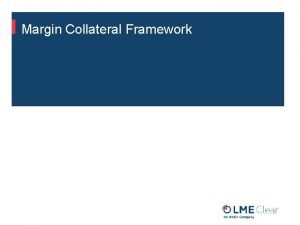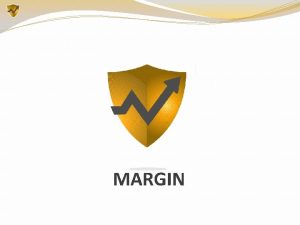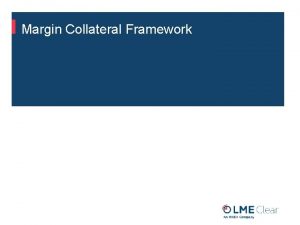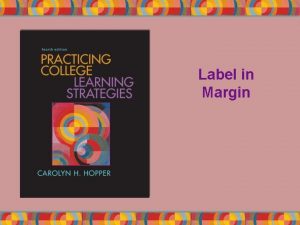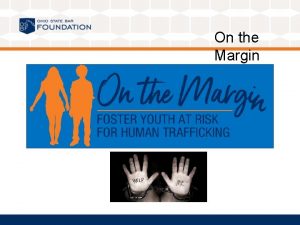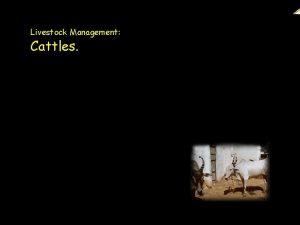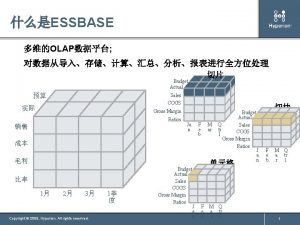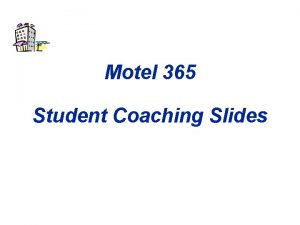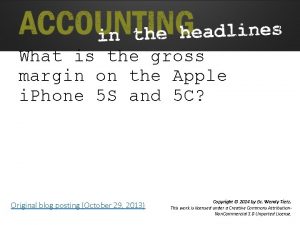Livestock Gross Margin Livestock Risk Protection Risk Management
































- Slides: 32

Livestock Gross Margin & Livestock Risk Protection Risk Management Agency Oklahoma City Regional Office 215 Dean A. Mc. Gee Ave, Suite 342 Oklahoma City, Oklahoma 731023423 405. 879. 2700 ext: 190 DISCLAIMER: Information does not change or supersede any policy, procedure, or actuarial documents.

Safety net programs available: Livestock Gross Margin (LGM) Cattle, Dairy Cattle, and Swine § Protects against declining prices and increasing feed costs. § market value of livestock minus feed costs Livestock Risk Protection (LRP) Fed Cattle, Feeder Cattle, Swine and Lambs § Protects against declining market prices of livestock.

Livestock Gross Margin (LGM) Cattle, Dairy Cattle, and Swine § LGM insurance plans can help protect your livestock operation against potential revenue loss caused by declining prices and increasing feed costs. § Gross margin = market value of livestock minus feed costs § You receive a loss payment if there is a difference between the gross margin guarantee and the actual gross margin.

Livestock Gross Margin (LGM) Cattle, Dairy Cattle, and Swine § Futures prices are used to determine the expected gross margin and the actual gross margin. § The prices are based on simple averages of futures contract daily settlement prices and are not based on the actual prices the producer receives at the market.

Livestock Gross Margin (LGM) Cattle, Dairy Cattle, and Swine You may choose to insure: § Cattle – up to 5, 000 head during any 11 -month insurance period and up to 10, 000 head per insurance year. (July-June) § Dairy Cattle – up to 240, 000 hundredweight of milk during any 11 -month insurance period or year. § Swine – up to 15, 000 head during any 6 -month insurance period and up to 30, 000 head per insurance year.

Livestock Gross Margin (LGM) Cattle, Dairy Cattle, and Swine You may choose to select a deductible, which will be the portion of the expected gross margin that you choose not to insure. Deductible amounts available: § Cattle: $0 to $150 per head in $10 increments. § Dairy Cattle: $0 to $2 per hundredweight in. 10 cent increments. § Swine: $0 to $20 per head in $2 increments.

Livestock Gross Margin (LGM) Cattle, Dairy Cattle, and Swine § Livestock Gross Margin products are sold on the last business Friday of each month. § Premium for LGM-Cattle are due with the application. § Premium for LGM-Dairy Cattle and Swine are due at the end of the insurance period.

Livestock Gross Margin (LGM) Cattle, Dairy Cattle, and Swine § For cattle and dairy - the insurance period contains the 11 months following the sales closing date. For example, the insurance period for the January 29 sales closing date contains the months of February through December. § Coverage begins the second month of the insurance period, so the coverage period for this example is March through December. § For swine, the insurance period is the 6 months following the sales closing date. Coverage begins the second month.

LGM for Cattle §LGM-Cattle offers two different types of endorsements: § finishing yearlings - designed for 750 -pound feeder cattle to be finished to 1, 250 pounds, and uses a fixed corn amount of 50 bushels. § finishing calves - designed for 550 -pound feeder cattle to be finished to 1, 150 pounds, and uses a fixed corn amount of 52 bushels. § LGM-Cattle does not insure against death loss or any other loss or damage to the producer’s cattle.

LGM for Cattle – How it Works Example – Yearling Finishing: In September 2015, an Oklahoma producer buys LGM – Yearling Finishing insurance coverage to market 100 head in March 2016. • • Insurance Period is October 2015 through August 2016 Deductible selected is $10/head Producer pays a premium of $85/head Expected Gross Margin for March is $130. 80/head From the RMA Website: Cattle (0803) Yearling Finishing (808) Oct. - Aug. Insurance Period (910) Month 2 Month 3 Month 4 Month 5 Month 6 Month 7 Month 8 Month 9 Month 10 Month 11 (November) (December) (January) (February) (March) (April) (May) (June) (July) (August) Expected Gross Margin -129. 70 -92. 45 -70. 90 45. 60 130. 80 143. 18 110. 85 78. 40 70. 97 63. 50 Actual Gross Margin N/A N/A N/A Remember - finishing yearlings is designed for 750 -pound feeder cattle to be finished to 1, 250 pounds, and uses a fixed corn amount of 50 bushels. Expected Gross Margin = (12. 5 x Live. Cattle$) – (7. 5 x Feeder. Cattle$) - (50 bu x Corn$)

LGM for Cattle – How it Works Example (continued) – Yearling Finishing: In March 2016, the producer markets 100 head. • • Producers provides marketing report to insurance company. RMA calculates Actual Gross Margin of $7. 43/head Notice of Probable Loss sent to producer at end of insurance period. Total Indemnity Due: Indemnity (per head) = ((Expected Gross Margin – Deductible) – Actual Gross Margin) Indemnity (per head) = (($130. 80 – $10) – $7. 43) Indemnity (per head) = $113. 37 Total Indemnity = $113 x 100 head = $11, 300. Total Premium = $ 85 x 20 head = $ 8, 500. $ 2, 800. Cattle (0803) Yearling Finishing (808) Oct. - Aug. Insurance Period (910) Expected Gross Margin Actual Gross Margin Month 2 Month 3 Month 4 Month 5 Month 6 Month 7 Month 8 Month 9 Month 10 Month 11 (November) (December) (January) (February) (March) (April) (May) (June) (July) (August) -129. 70 -92. 45 -70. 90 45. 60 130. 80 143. 18 110. 85 78. 40 70. 97 63. 50 -116. 83 -143. 33 -85. 40 67. 97 7. 43 80. 13 80. 63 75. 13 27. 10 -10. 47

LGM for Cattle Availability:

LGM for Swine §Operations that are covered by LGM-Swine are: § Farrow-to-Finish Operations; § Feeder Pig-Finishing Operations; and § Segregated Early Weaned (SEW) Operations. § LGM-Swine does not insure against death or any other loss or damage to the producer’s swine.

LGM for Swine Availability: § LGM-Swine is available in the 48 contiguous states to all swine producers.

LGM for Dairy Cattle § Provides protection when feed costs rise or milk prices drop and can be tailored to any size farm. § Gross margin = the market value of milk minus feed costs. § LGM-Dairy uses futures prices for corn, soybean meal, and milk to determine the expected gross margin and the actual gross margin. LGM-Dairy is similar to buying both a call option to limit higher feed costs and a put option to set a floor on milk prices.

LGM for Dairy Cattle ■LGM for Dairy Cattle does not insure against: § Dairy cattle death § Unexpected decreases in milk production § Unexpected increases in feed use § Anticipated or multiple-year declines in milk prices § Anticipated or multiple-year increases in feed costs

LGM for Dairy Cattle Availability: § LGM-Dairy is available to any producer who owns dairy cattle in the 48 contiguous states. § NOTE: Producers enrolled in the Farm Service Agency Margin Protection Program for Dairy (MPP-Dairy) are prohibited by law from participating in the LGM-Dairy program at the same time.

Livestock Risk Protection (LRP) Fed Cattle, Feeder Cattle, Swine and Lambs § Livestock Risk Protection insurance plans are designed to insure against declining market prices of livestock. § Producers may select from variety of coverage levels and insurance periods that match the time their livestock would normally be marketed.

Livestock Risk Protection (LRP) Fed Cattle, Feeder Cattle, Swine and Lambs § You may choose coverage prices ranging from 70 to 100 percent of the expected ending value. (Lamb coverage prices range from 80 -95%) § At the end of the insurance period, if the actual ending value is below the coverage price, you will be paid an indemnity for the difference.

Livestock Risk Protection (LRP) Fed Cattle, Feeder Cattle, Swine and Lambs § You submit a one time application for LRP coverage. After the application is accepted, you can buy a specific coverage endorsement (SCE) throughout the year. § Coverage prices, rates and actual ending values are posted on RMA’ website. § A livestock crop year is July 1 through June 30. The crop year is used only for tracking maximum head per year.

Livestock Risk Protection (LRP) Fed Cattle, Feeder Cattle, Swine and Lambs You may choose to insure up to:

Livestock Risk Protection (LRP) Fed Cattle, Feeder Cattle, Swine and Lambs Length of coverage available for each specific coverage endorsement:

Livestock Risk Protection (LRP) Fed Cattle, Feeder Cattle, Swine and Lambs Key advantages include: § Quantity – There is no minimum limit to the number of livestock per endorsement, so LRP coverage is good for smaller herds lacking quantities to effectively use futures and option contracts to hedge price risk. § Subsidy – Depending on what the market is doing, LRP can be less expensive at certain times in the market than the Chicago Mercantile Exchange futures or options because the program is subsidized 13%.

Livestock Risk Protection (LRP) Availability:

LRP for Fed Cattle ■ Coverage for Fed Cattle is available for both heifers and steers, weighing between 1, 000 and 1, 400 pounds, that will be marketed for slaughter near the end of the insurance period.

LRP for Feeder Cattle Coverage for Feeder Cattle is available for: § Calves § § Steers Heifers Predominantly Brahman cattle Predominantly dairy cattle You may also choose from two weight ranges: § under 600 pounds § 600 -900 pounds

LRP for Feeder Cattle – How it Works Example: In September 2015, an Oklahoma producer buys a specific coverage endorsement (SCE) for 100 head of 5. 5 cwt feeder steers for 17 weeks. From the RMA Website: State County 40 998 All Oklahoma Counties Endorsement Commodity Length 17 Type Practice Crop Year 997 No 0801 Feeder 809 Steers Practice Cattle Weight 1 Specified 2016 Exp. End Coverage Value Price Level 193. 283 $191. 41 • The expected ending value is $ 193. 283/cwt. • Coverage Price is $191. 41/cwt 0. 9903 Rate 0. 048032 Cost Per Actual End Date CWT End Value 9. 194 1/25/2016 • Coverage level is 99% • Rate is. 048032 N/A

LRP for Feeder Cattle – How it Works Example: SCE Insured Value: 100 head x 5. 5 cwt = 550 cwt x $193. 28 = $106, 304 (total cwt x expected ending value = insured value) Calculate Premium: $106, 304 x. 048032 = $5, 106. – 13% subsidy = $4, 442 Premium per head: $44. 42

LRP for Feeder Cattle – How it Works Example: At the end of the insurance period we learn the actual end value is $174. 28/cwt. From the RMA Website: State County 40 998 All Oklahoma Counties Endorsement Commodity Length 17 Type Practice Crop Year 997 No 0801 Feeder 809 Steers Practice Cattle Weight 1 Specified 2016 Exp. End Coverage Value Price Level 193. 283 $191. 41 0. 9903 Rate 0. 048032 Cost Per Actual End Date CWT End Value 9. 194 1/25/2016 $174. 28

LRP for Feeder Cattle – How it Works Example: SCE Insured Value: 100 head x 5. 5 cwt = 550 cwt x $193. 28 = $106, 304 Premium : $106, 304 x . 048032 = $5, 106. – 13% subsidy = $4, 442. Premium per head: $44. 42 Actual Ending Value: 550 cwt x 174. 28 = $95, 854 Indemnity: $106. 304 - $95, 854 = $10, 450 Indemnity per head: $104. 50 Total Indemnity = $104. 50 x 100 head = $10, 450. Total Premium = $ 44. 42 x 100 head = $ 4, 442. $ 6, 008.

Visit the RMA website: www. rma. usda. gov 31

Thank you!
 Livestock risk management brokers near me
Livestock risk management brokers near me Phase margin
Phase margin Phase margin gain margin
Phase margin gain margin Gross profit gcse
Gross profit gcse Gross margin dashboard
Gross margin dashboard Wheat gross margin
Wheat gross margin Finance gcse
Finance gcse Net present value adalah
Net present value adalah Risk management and worker protection
Risk management and worker protection Livestock breed identification: swine - vocabulary
Livestock breed identification: swine - vocabulary Risk margin solvency ii
Risk margin solvency ii Market risk assessment
Market risk assessment Profit margin management path
Profit margin management path Catastrophic risk protection endorsement
Catastrophic risk protection endorsement Financial risk protection
Financial risk protection Key risk indicators financial risk management
Key risk indicators financial risk management Risk map
Risk map Livestock breed identification swine
Livestock breed identification swine Cattle egrets and livestock
Cattle egrets and livestock Livestock judging oral reasons
Livestock judging oral reasons Livestock judging reasons examples
Livestock judging reasons examples Animal kingdom taxonomy chart
Animal kingdom taxonomy chart Livestock identification methods
Livestock identification methods Livestock information system
Livestock information system Parasites of livestock - vocabulary
Parasites of livestock - vocabulary Livestock network
Livestock network Livestock judging card
Livestock judging card Domestic livestock
Domestic livestock Livestock judging basics
Livestock judging basics Ministry of agriculture and livestock development nepal
Ministry of agriculture and livestock development nepal Colorado livestock
Colorado livestock Livestock valuation methods
Livestock valuation methods Livestock biosecurity network
Livestock biosecurity network

